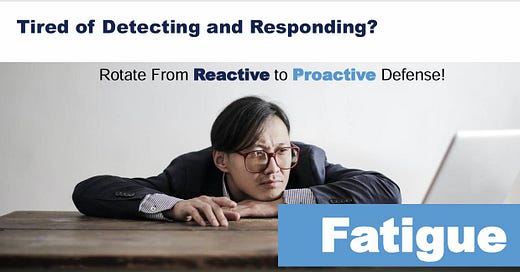The Cyber Sirens: How Attention Became the Most Valuable Defense Asset
Because 10,000 Alerts a Day Isn’t a Security Strategy
In cybersecurity, attention isn’t just a resource—it’s a battleground.
Imagine you’re Odysseus, tied to the mast while the sirens sing their deadly song. Except the sirens aren’t mythical creatures—they’re alerts, dashboards, and vulnerabilities, all screaming for your focus. And if you turn your head the wrong way for even a moment, the consequences can be catastrophic.
Chris Hayes, in his upcoming book The Sirens' Call: How Attention Became the World's Most Endangered Resource, argues that attention is under siege. Every platform fights for a piece of our mental bandwidth. In cybersecurity, the problem is even more urgent—because when your attention slips, attackers win.
The Attention Economy of Cybersecurity
Security teams live in a world of noise. Every day, they face an endless stream of alerts—70% of which are false positives. The sheer volume is numbing. And while you’re busy triaging a low-priority alert, the real threat slips by unnoticed.
Attackers know this. They count on distraction. When you’re focused on the noise, they find the gaps. Major breaches often happen during periods of divided attention—software patches, cloud migrations, or even long weekends.
And it’s not just the volume of information; it’s how it’s used against you. Modern attackers are masters of camouflage. Polymorphic malware constantly shifts to evade static defenses. Information overload becomes a weapon.
The message is clear: Attention fatigue isn't just an operational issue—it's an attack surface.
Image source: Gartner
Why Static Defenses Fail in a Dynamic Threat Landscape
Traditional cybersecurity relies on watching and reacting. But modern attackers exploit predictable environments. It's like relying on a lighthouse that only works when the sea is calm—useful, until the storm hits.
The solution? Stop being static. Start being adaptive.
That’s where AMTD (Automated Moving Target Defense) comes in.
What is AMTD?
AMTD continuously changes the digital environment to disrupt attackers. Instead of leaving systems static and vulnerable, it automates the movement, rotation, and regeneration of workloads and configurations. This dynamic approach makes it harder for attackers to gain a foothold, reduces false positives, and allows security teams to focus on real threats. With AMTD, your infrastructure becomes a moving target that is harder to hit and easier to defend.
AMTD: Shifting the Battlefield
Think of AMTD as your automated defense mechanism—constantly changing the digital landscape, so attackers never find stable ground. Instead of leaving workloads, AI models, and configurations exposed, AMTD continuously rotates, terminates, and regenerates these environments.
Here’s why that matters:
Less Noise, More Signal: By automating movement, you reduce the number of stale targets. This cuts down on false positives and lets your team focus on real threats.
Automated Resilience: AMTD doesn’t just detect threats—it responds. It can terminate compromised environments and rebuild them autonomously.
Proactive Defense: If attention is scarce, the best defense is to change the rules of the game. AMTD makes environments unpredictable, leaving attackers in the dark.
In one deployment, AMTD reduced manual alert triage by 40%, giving security teams breathing room to handle high-priority incidents. That’s not just efficiency—it’s survival.
From Information Overload to Intelligent Defense
The broader lesson? Cybersecurity can’t be an attention arms race. You’ll never out-watch or out-analyze a system designed to distract you. Instead, you need to shift your strategy.
In the age of distraction, the winning approach isn’t to look harder—it’s to move smarter.
AMTD offers that edge. By automating how digital environments evolve, it reduces cognitive load and makes your infrastructure a moving target.
The future of cybersecurity belongs to those who control the battlefield—not those stuck watching it.
Want to see how AMTD can change the game for your organization? Let’s talk.




